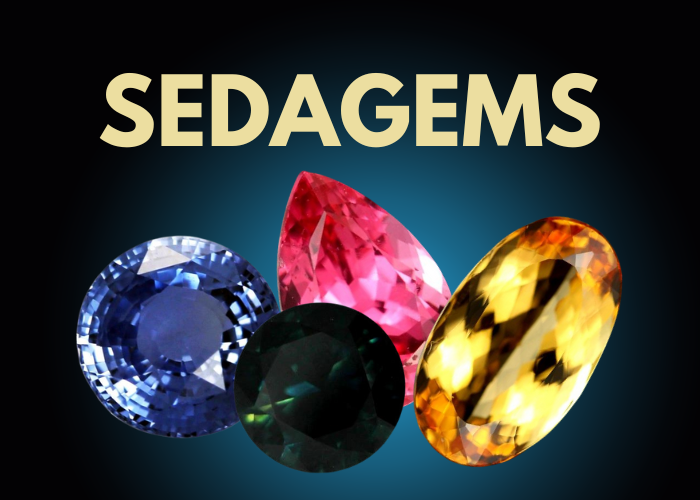You have not bid on this auction.
30.54 CTS ALEXANDRITE - SPECIMEN FROM TANZANIA [S-SAFE263]
- SKU
- Dimensions (mm)
- 19.000 x 12.000 x 12.000mm
- Weight (cts)
- 30.540
- Type
- Specimen
- Colours
-
ALEXANDRITE SPECIMEN
This is a natural untreated Alexandrite specimen from Tanzania which i bought from the miner on my last trip there. They are not suitable for faceting but can be cabbed or kept as a specimen.
The most sensational feature about this stone, however, is its surprising ability to change its colour. Green or bluish-green in daylight, alexandrite turns a soft shade of red, purplish-red or raspberry red in incandescent light. This unique optical characteristic makes it one of the most valuable gemstones of all, especially in fine qualities.
Alexandrite is very scarce: this is due to its chemical composition. It is basically a chrysoberyl, a mineral consisting of colourless or yellow transparent chrysoberyl, chrysoberyl cat’s eye and colour-changing alexandrite (also in cat’s eye varieties). It differs from other chrysoberyls in that it not only contains iron and titanium, but also chromium as a major impurity. And it is this very element which accounts for the spectacular colour change. Rarely, vanadium may also play a part. According to CIBJO nomenclature, only chrysoberyls displaying a distinct change of colour may be termed alexandrite.
Like many other gemstones, alexandrite emerged millions of years ago in a metamorphic environment. But unlike many others, its formation required specific geological conditions. The chemical elements beryllium (a major constituent in chrysoberyl) and chromium (the colouring agent in alexandrite) have contrasting chemical characteristics and do not as a rule occur together, usually being found in contrasting rock types. Not only has Nature brought these contrasting rock types into contact with each other, but a lack of the chemical element silica (the second most common element in the Earth’s crust) is also required to prevent the growth of emerald. This geological scenario has occurred only rarely in the Earth’s history and, as a result, alexandrite crystals are very scarce indeed.
- SKU
- Dimensions (mm)
- 19.000 x 12.000 x 12.000 mm
- Weight (cts)
- 30.540
- Type
- Specimen
- Colours
-
ALEXANDRITE SPECIMEN
This is a natural untreated Alexandrite specimen from Tanzania which i bought from the miner on my last trip there. They are not suitable for faceting but can be cabbed or kept as a specimen.
The most sensational feature about this stone, however, is its surprising ability to change its colour. Green or bluish-green in daylight, alexandrite turns a soft shade of red, purplish-red or raspberry red in incandescent light. This unique optical characteristic makes it one of the most valuable gemstones of all, especially in fine qualities.
Alexandrite is very scarce: this is due to its chemical composition. It is basically a chrysoberyl, a mineral consisting of colourless or yellow transparent chrysoberyl, chrysoberyl cat’s eye and colour-changing alexandrite (also in cat’s eye varieties). It differs from other chrysoberyls in that it not only contains iron and titanium, but also chromium as a major impurity. And it is this very element which accounts for the spectacular colour change. Rarely, vanadium may also play a part. According to CIBJO nomenclature, only chrysoberyls displaying a distinct change of colour may be termed alexandrite.
Like many other gemstones, alexandrite emerged millions of years ago in a metamorphic environment. But unlike many others, its formation required specific geological conditions. The chemical elements beryllium (a major constituent in chrysoberyl) and chromium (the colouring agent in alexandrite) have contrasting chemical characteristics and do not as a rule occur together, usually being found in contrasting rock types. Not only has Nature brought these contrasting rock types into contact with each other, but a lack of the chemical element silica (the second most common element in the Earth’s crust) is also required to prevent the growth of emerald. This geological scenario has occurred only rarely in the Earth’s history and, as a result, alexandrite crystals are very scarce indeed.
| Shipping provider | Shipping to Australia | Shipping to rest of world |
|---|---|---|
| FedEx | $12.00 / 3 days | $39.00 / 10 days |
|
Australia
FedEx is discounted to $12.00 on orders with 2 or more items
Rest of the world
FedEx is discounted to $39.00 on orders with 2 or more items
|
||
| Registered Shipping | $9.00 / 7 days | $16.00 / 21 days |
|
Australia
Registered Shipping is discounted to $9.00 on orders with 2 or more items
Rest of the world
Registered Shipping is discounted to $16.00 on orders with 2 or more items
|
||

-
 Positive
PositivePaid and shipped - no feedback left after 100 days
-
 Positive
PositiveBeautiful agate piece , and as always fast efficient service from Sedagems
-
 Positive
PositiveNice
-
 Positive
PositiveGorgeous stones, very happy
-
 Positive
PositiveGorgeous stone, very happy
Why are users outbidding themselves?
When a bid is placed, this is the maximum amount a user is willing to bid for the product. Our system will then automatically bid on that users behalf, incrementally increasing the bid to maintain their position as the highest bidder, up to the specified maximum.
When there is an icon indicating 'Auto Bid,' it means our system is actively placing bids for the user based on their maximum bid. This may appear as if users are outbidding themselves, but it's simply a result of the system updating the bid to reflect the users maximum limit.











![22.9CTS VARASCITE 'SPIDER WEB' AUSTRALIA [MGW 4616]](https://liveplatforms-production.b-cdn.net/tenants/gr/uploads/images/490000-494999/490866/55236df10a48f.JPG?width=480&aspect_ratio=1001%3A1000)





